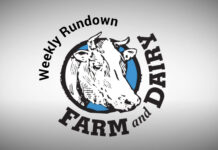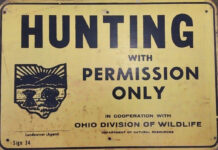One of the most-asked questions I have heard this summer is “Did you get any of that rain that came through?”
I know I have spent a lot of my time watching the radar, getting excited that a large rain cell was headed right for me only to watch it go north or south or just disappear altogether.
Noble county is in the midst of a moderate-to-severe drought already this summer, with the hottest days still to come. The cracks in the fields are getting larger, and producers are having to haul water for livestock because springs are running dry.
Are you prepared?
Do you have a plan to protect pastures during drought conditions? Most producers will say their livestock is their livelihood, but without productive, wealthy pastures for the livestock to graze on, their livelihood will be threatened.
Drought conditions can be particularly hard on pastures, causing plants to decrease growth in order to decrease energy needs to survive. Eventually, the plants will go dormant until conditions improve or just die altogether.
Over grazing a pasture that is already stressed by drought will cause serious long-term effects on the pasture. With continual stress of drought and overgrazing, the plants’ ability to regain energy and vigor could take years. As the plants struggle, the exposed ground will provide space for weeds to invade. Invasive species can take hold and push desirable grasses out.
Have a plan
Planning ahead can reduce the long-term impacts drought and overgrazing can have on a pasture. The most important thing is to protect the pastures before the damage is done.
Keeping an eye on the length of grass residual left is important. Livestock need to be pulled before the residual goes below 4 inches, and they need to remain off until grasses have a chance to recover. Grazing below 4 inches reduces the amount of green leaf space available for photosynthesis.
Just as we do during “mud season,” we should have a sacrifice area available to lock down the livestock and supply ample amounts of hay and water. If feeding hay is not an option, consider the number of livestock you are managing. Consider culling under-performing cows or selling weened calves or feeders early.
A cow needs to eat on average 3% of their body weight daily. This needs to be considered when deciding on stocking rates.
Getting help
Contacting your local soil and water conservation district is a great place to start when trying to develop a grazing plan that will work for you. We can develop a grazing management plan that fits your individual needs, including a backup plan during drought conditions.
Every grazing season has its ups and downs. Focusing on “best practices” will keep your pastures in good condition and maintain health and productivity during drought conditions. Having that backup plan will help keep your livestock and pastures healthy while giving you peace of mind to handle any emergency that arises.













